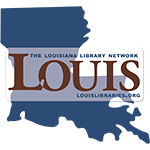World Civilization I
Topic outline
-
Welcome to World Civilization I!
Course Introduction
This course will provide you with a broad outline of World History from its origins to 1500. The course will cover the origins of humankind, our organization into cities, states, and empires, our social tendencies, economic needs, and spiritual wants. The heart of the course is to compare and contrast civilizations and cultures from five key regions: the Fertile Crescent, India, Africa, Eurasia, and the Americas. We will learn how to think historically, use a variety of sources, and apply good reading and writing skills. The goal for this course is to foster openness and appreciation for other cultures, and encourage you to think creatively about modern society and your own position within it.
Upon successful completion of this course, the student will be able to:
-
Develop a global perspective of world issues and human rights and responsibilities to understand and appreciate common factors and/or differences in human experiences and communities.
-
Investigate the origins of civilizations to better understand continuities and changes in world history.
-
Understand historical trends, movements, and change over time regarding politics, economics, religion, gender, social policy, art and culture.
-
Identify and analyze primary sources using various formats including technology, texts, and multimedia.
Adopting institution should provide learners information on how to navigate the course. Consider adding an introductory navigation video. Text description could include, for example:Navigating the Course
This course is set up in Modules covering various topics which may be accessed from the course navigation menu on the left or by scrolling below. Modules may be collapsed in the menu and it the body of the course to minimize scrolling. Each module includes the relevant chapters followed by various activities, which may include discussion forums, listening activities and quizzes, practice quizzes, module tests, and other relevant activities as appropriate for each module. Many items are required and may be marked as completed automatically when the activity has been submitted (the broken check box), but others will marked as done by the student (the solid check box).Please move through the items below and continue through the Learner Support and Getting Started modules before moving on to Module 1. Be sure to check for announcements and due dates to stay on track.
 This course and its contents are licensed under a Creative Commons Attribution 4.0 International License by LOUIS: The Louisiana Library Network, except where otherwise noted.
This course and its contents are licensed under a Creative Commons Attribution 4.0 International License by LOUIS: The Louisiana Library Network, except where otherwise noted. -
-
Use the information in this module to customize the template to your needs. This module is currently hidden from students, and available for you to refer to throughout the semester.
-
The team joins Ryan in discussing what it is like to work on creating the LOUIS World Civilization 1 course and the accompanying podcast episodes.
This podcast episode has been produced under a CC BY NC ND license. All episodes in this series are made possible through funding from Louisiana Board of Regents eLearning Taskforce Innovation Grants Program for the project: Learn with podcasts! Creating Podcast Lectures to Enhance Dual Enrollment Students’ Engagement with History and the efforts of Lise Namikas, Christopher Gilson, Chresancio Jackson, Ryan Pierce, and Amelia Brister.
Episode Transcript
-
The team discusses OER materials and their intended audience; ensuring quality materials; understanding the best ways to use these materials in your course.
This podcast episode has been produced under a CC BY NC ND license. All episodes in this series are made possible through funding from Louisiana Board of Regents eLearning Taskforce Innovation Grants Program for the project: Learn with podcasts! Creating Podcast Lectures to Enhance Dual Enrollment Students’ Engagement with History and the efforts of Lise Namikas, Christopher Gilson, Chresancio Jackson, Ryan Pierce, and Amelia Brister.
Episode Transcript
-
Listen as the team discusses ways and research that can help administrators approve using OER in your courses.
This podcast episode has been produced under a CC BY NC ND license. All episodes in this series are made possible through funding from Louisiana Board of Regents eLearning Taskforce Innovation Grants Program for the project: Learn with podcasts! Creating Podcast Lectures to Enhance Dual Enrollment Students’ Engagement with History and the efforts of Lise Namikas, Christopher Gilson, Chresancio Jackson, Ryan Pierce, and Amelia Brister.
Episode transcript
-
This module contains all the items you should review and complete before you begin Module 1. Before moving on, be sure to:
- Check the News and Announcements Forum
- Read the Course Syllabus
- Introduce yourself to the class
- Read the instructions for the Q & A Forum
Good luck in the course!-
Use this forum to tell us a little about yourself and your interests. Some topic ideas:
- What is your field of study/research interest or concentration?
- What are you most interested in learning about in this class and why?
- Have you ever taken an online class before?
- Any other information you would like to share with your classmates, such as special interests or activities.
Post a picture! We look forward to meeting you.
-
Use this forum to ask your instructor any questions you have about the course. You may post at any time, and your instructor will respond here. Be as specific as possible.
Please keep in mind that others can see your posts, so do not post any personal information. If you have questions about your grade, please email your instructor directly. You can expect a response to posts and emails within 24 hours M-F, next business day on weekends.
- Check the News and Announcements Forum
-

We begin our study rightly at the beginning of mankind. In this module, we will investigate the evolution of man as far back as 8 million years ago to homo sapiens. Moving out of Africa, modern humans populated the world during the Paleolithic Era and ultimately forever changed society during the Neolithic Era. Around 8,000 BCE, the development of agriculture during the Neolithic Revolution will have intended and unintended consequences. This fascinating time in history demonstrates how humans interact with their environment.
This chapter is relevant to our contemporary world today because the foundation of human history allows us to appreciate commonalities among cultures and explain the beginnings of agriculture, which is still a vital component of our world today.
Upon completion of this module, you will be able to:- Identify and explain the significance of the Out of Africa Theory, Paleolithic Era, and Neolithic Era (SLO #1).
- Identify overarching themes and trends in world history as they relate to the foundations of world history (SLO #2)
- Compare and contrast gender norms during the Paleolithic Era and the Neolithic Era (SLO #3).
To achieve these objectives:
- Read the Module 1 Introduction.
- Read and view the materials in the Module 1 Pressbooks textbook where the Out of Africa Theory, Paleolithic Era, and Neolthilic Era are discussed. The textbook also presents overarching themes and trends such as the development of agriculture and the foundation of gender norms.
- Complete the Module 1 discussion assignment which compares and contrasts gender norms during the Paleolithic and Neolithic Eras.
- Complete the Module 1 quiz evaluating your understanding of key themes, concepts, and trends in this module.
Module Pressbooks Resources and Activities
You will find the following resources and activities in this module at the Pressbooks website. Click on the links below to access or complete each item.
-
We begin our study rightly at the beginning of mankind. In this module, we will investigate the evolution of man as far back as 8 million years ago to homo sapiens. Moving out of Africa, modern humans populated the world during the Paleolithic Era and ultimately forever changed society during the Neolithic Era. Around 8,000 BCE, the development of agriculture during the Neolithic Revolution will have intended and unintended consequences. This fascinating time in history demonstrates how humans interact with their environment. In this episode Dr. Juliet Brophy of Louisiana State University joins Lise Namikas.
This podcast episode has been produced under a CC BY NC ND license. All episodes in this series are made possible through funding from Louisiana Board of Regents eLearning Taskforce Innovation Grants Program for the project: Learn with podcasts! Creating Podcast Lectures to Enhance Dual Enrollment Students’ Engagement with History and the efforts of Lise Namikas, Christopher Gilson, Chresancio Jackson, Ryan Pierce, and Amelia Brister.
Episode transcript
- Identify and explain the significance of the Out of Africa Theory, Paleolithic Era, and Neolithic Era (SLO #1).
-

Our previous chapter allowed us to understand human foundations and now in 3,000 B.C.E., we get our first civilizations. This does not mean that everyone in the world would have been civilized. There are distinct characteristics necessary for a group of people to be considered a civilization. The first civilizations we will discuss will be Egypt, Mesopotamia, and Nubia. Egypt will be relatively protected and there will not be much political unrest. Mesopotamia however will not be so lucky; we see continuous turmoil in Mesopotamia. Religion was foundational for each early civilization and we will see varying degrees of rights for women.
This chapter is relevant to our contemporary world today because investigating the orgins of civilizations allows for a better understanding of continuities and changes in our world today. For example, the lands associated with ancient Mesopotamia continue to see turmoil today.
Upon completion of this module, you will be able to:- Identify and explain the significance of the first civilizations (SLO#1).
- Identify overarching themes and trends in world history as they relate to the first civilizations (SLO#2).
- Compare and contrast the early civilizations of Mesopotamia and Egypt (SLO #3).
- Analyze The Code of Hammurabi to understand and explain the audience, context, and purpose (SLO#4).
To achieve these objectives:
- Read the Module 2 Introduction
- Read and view the materials in the Module 2 Pressbooks textbook where the first civilizations of Mesopotamia and Africa are discussed.
- Complete the Module 2 map quiz (SLO #6)
- Complete the Module 2 discussion assignment on the Standard of Ur (SLO #4)
- Complete the Module 2 assignment on the Code of Hammurabi (SLO #4)
- Complete the Module 2 quiz evaluating your understanding of key themes, concepts, and trends in this module.
Module Pressbooks Resources and Activities
You will find the following resources and activities in this module at the Pressbooks website. Click on the links below to access or complete each item.
-
The first civilizations we will discuss will be Egypt, Mesopotamia, and Nubia. Egypt will be relatively protected and there will not be much political unrest. Mesopotamia however will not be so lucky; we see continuous turmoil in Mesopotamia. Religion was foundational for each early civilization and we will see varying degrees of rights for women.
This podcast episode has been produced under a CC BY NC ND license. All episodes in this series are made possible through funding from Louisiana Board of Regents eLearning Taskforce Innovation Grants Program for the project: Learn with podcasts! Creating Podcast Lectures to Enhance Dual Enrollment Students’ Engagement with History and the efforts of Lise Namikas, Christopher Gilson, Chresancio Jackson, Ryan Pierce, and Amelia Brister.
Episode Transcript
- Identify and explain the significance of the first civilizations (SLO#1).
-
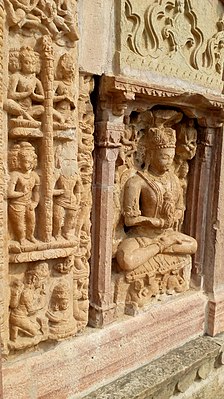
Welcome to Module 3 ! This module will explore the glories of the India thorugh the examination of its anicent past to its late medieval period. This module begins with an introduction into the the people and the terrain of the Indus Valley civilization. The learner will examine the ancient civilaizations of Harappa and Mohenjo-Dara. The next topic that will be covered will be the Vedic Age and the coming of the Aryan people. The text will explore the impact that the Aryans had on India's religion and its culture.
Upon completion of this module, you will be able to:- Identify and explain the significance of key figures, events, and ideas associated with ancient Indian history (SLO #1).
- Identify overarching themes and trends as they relate to politics, economics, religion, culture, and society in India (SLO #2).
- Locate and identify relevant geographical locations associated with ancient and medieval India (SLO #6).
To achieve these objectives:
- Read the Module 3 Introduction
- Read and view the materials in the Module 3 Pressbooks textbook
- Complete the Module 3 discussion assignment.
- Complete the Module 3 exam.
Module Pressbooks Resources and Activities
You will find the following resources and activities in this module at the Pressbooks website. Click on the links below to access or complete each item.
-
This module will explore the glories of the India through the examination of its ancient past to its late medieval period. This module begins with an introduction into the people and the terrain of the Indus Valley civilization. The learner will examine the ancient civilizations of Harappa and Mohenjo-Dara. The next topic that will be covered will be the Vedic Age and the coming of the Aryan people. The text will explore the impact that the Aryans had on India's religion and its culture.
This podcast episode has been produced under a CC BY NC ND license. All episodes in this series are made possible through funding from Louisiana Board of Regents eLearning Taskforce Innovation Grants Program for the project: Learn with podcasts! Creating Podcast Lectures to Enhance Dual Enrollment Students’ Engagement with History and the efforts of Lise Namikas, Christopher Gilson, Chresancio Jackson, Ryan Pierce, and Amelia Brister.
Podcast Transcript
-
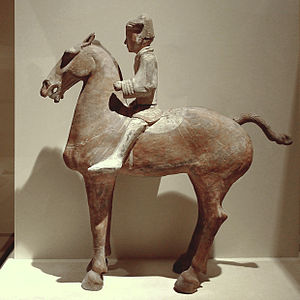
Welcome to Module 4! This module will explore the glories of the China through the examination of its ancient past to its dynastic civilization. This module begins with an introduction into the people and the terrain of East Asia. The learner will examine the beginnings of the numerous dynasties in China's history
Upon completion of this module, you will be able to:
- Identify and explain the significance of key figures, events, and ideas associated with ancient East Asian history (SLO #1).
- Identify overarching themes and trends as they relate to politics, economics, religion, culture, and society in East Asia (SLO #2).
- Locate and identify relevant geographical locations associated with China and East Asia (SLO #6).
To achieve these objectives:
- Read the Module 4 Introduction
- Read and view the materials in the Module 4 Pressbooks textbook
- Complete the Module 4 discussion assignment.
- Complete the Module 4 exam.
Module Pressbooks Resources and Activities
You will find the following resources and activities in this module at the Pressbooks website. Click on the links below to access or complete each item.
-
This module will explore the glories of the China through the examination of its ancient past to its dynastic civilization. This module begins with an introduction into the people and the terrain of East Asia. The learner will examine the beginnings of the numerous dynasties in China's history.
This podcast episode has been produced under a CC BY NC ND license. All episodes in this series are made possible through funding from Louisiana Board of Regents eLearning Taskforce Innovation Grants Program for the project: Learn with podcasts! Creating Podcast Lectures to Enhance Dual Enrollment Students’ Engagement with History and the efforts of Lise Namikas, Christopher Gilson, Chresancio Jackson, Ryan Pierce, and Amelia Brister.
Podcast transcript
-
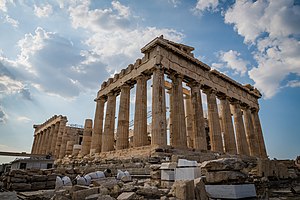
The Greeks have been considered the cornerstone of Western civilization. This is true in many respects. Both democracy and philosophy come from the Greeks. We also owe the study of history to the Greeks. The Greeks were humanity-centered. This means that the human mind and body were important to the Greeks. We see this in philosophy, art, and athletics (think of the Olympics).
As for dates, the peak of ancient Greece is generally considered around 450 B.C.E. (the Delian League) and the civilization generally closes around 323 B.C.E. (the death of Alexander the Great). Much of what the Greeks accomplished will not end with the downfall of Athens and Sparta because of Alexander the Great. He will create a massive empire. Unfortunately, he will not live to fully see his dream realized. He will die a few months shy of turning 33 years old. Alexander is one of the most intriguing figures in history. He has become a legend and distinguishing fact from fiction has become difficult, even for historians. Alexander is given credit for extending Greek culture throughout the world. Much of Greek society will continue through the Roman Empire and will be reborn again with the Renaissance.
This chapter is relevant to our contemporary world today because it allows us to question if the Greek value importance placed on human rights and responsibilities continues in our current age.
Upon completion of this module, you will be able to:- Identify and explain the significance of the Dark Ages, Archaic Period, Classic Age, and Hellenistic Age (SLO #1).
- Identify overarching themes and trends in world history as they relate to the Greek world (SLO #2)
- Analyze an excerpt from Histories and explain the purpose (SLO #4)
To achieve these objectives:
- Read the Module 5 Introduction.
- Read and view the materials in the Module 5 Pressbooks textbook where key events such as the Dark Ages, Archaic Period, Classica Age, and Hellenistic Age are discussed.
- Complete the Module 5 map quiz (SLO #6)
- Complete the Module 5 discussion assignment on Herodotus' Histories (SLO #4)
- Complete the Module 5 quiz evaluating your understanding of key themes, concepts, and trends in this module.
Module Pressbooks Resources and Activities
You will find the following resources and activities in this module at the Pressbooks website. Click on the links below to access or complete each item.
-
The Greeks have been considered the cornerstone of Western civilization. This is true in many respects. Both democracy and philosophy come from the Greeks. We also owe the study of history to the Greeks. The Greeks were humanity-centered.
As for dates, the peak of ancient Greece is generally considered around 450 B.C.E. (the Delian League) and the civilization generally closes around 323 B.C.E. (the death of Alexander the Great). Much of what the Greeks accomplished will not end with the downfall of Athens and Sparta because of Alexander the Great. He will create a massive empire. Alexander is one of the most intriguing figures in history. He has become a legend and distinguishing fact from fiction has become difficult, even for historians. Alexander is given credit for extending Greek culture throughout the world. Much of Greek society will continue through the Roman Empire and will be reborn again with the Renaissance.
This podcast episode has been produced under a CC BY NC ND license. All episodes in this series are made possible through funding from Louisiana Board of Regents eLearning Taskforce Innovation Grants Program for the project: Learn with podcasts! Creating Podcast Lectures to Enhance Dual Enrollment Students’ Engagement with History and the efforts of Lise Namikas, Christopher Gilson, Chresancio Jackson, Ryan Pierce, and Amelia Brister.
Podcast Transcript
- Identify and explain the significance of the Dark Ages, Archaic Period, Classic Age, and Hellenistic Age (SLO #1).
-
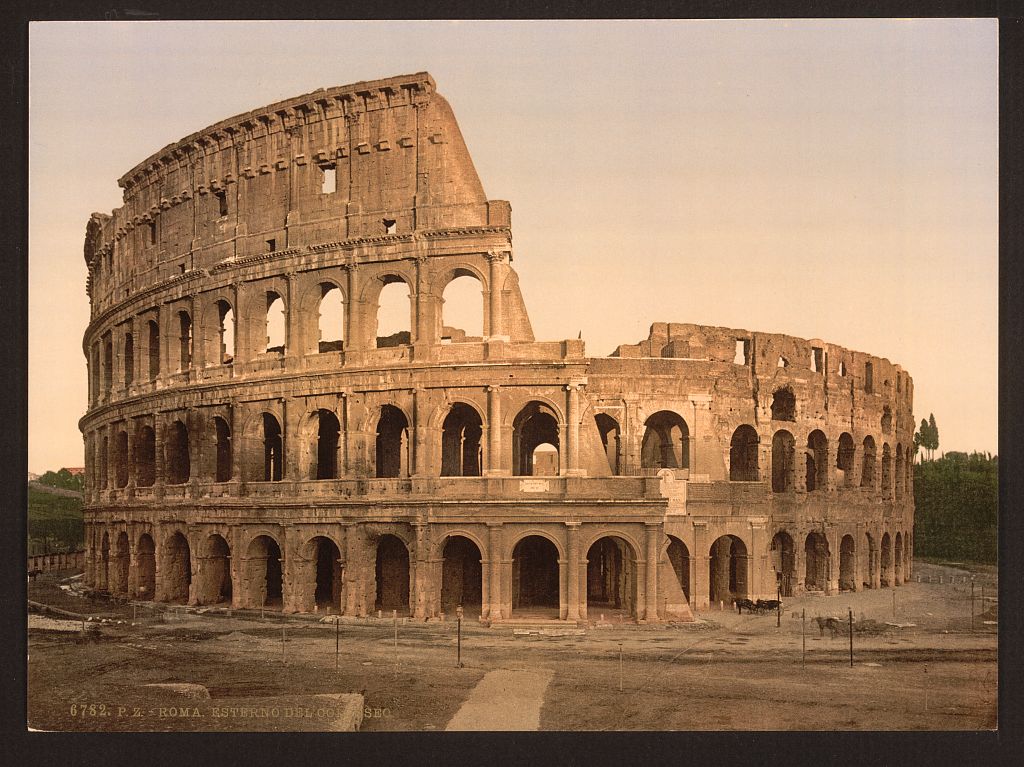
Rome wasn’t built in a day. The Roman Republic (and later, the Roman Empire) was built on many of the achievements of its neighbors in the Mediterranean region—especially Greece. Rome struggled to address the challenges of governing a large area (and population), but its innovations in politics and religion continue to influence our world today. The Fall of (Western) Rome in 476 AD (CE) has long served as a reminder of how quickly our world can change.
Upon completion of this module, you will be able to:
- Identify and explain the significance of key figures, events, and ideas associated with the Roman World (SLO #1).
- Identify overarching themes and trends as they relate to politics, economics, religion, culture, and society in the Roman World (SLO #2).
- Locate and identify relevant geographical locations associated with the Roman World (SLO #6).
To achieve these objectives:
- Read the Module 6 Introduction
- Read and view the materials in Chapter 6 of the Pressbooks textbook.
- Complete the Module 6 discussion assignment.
- Complete the Module 6 exam.
Module Pressbooks Resources and Activities
You will find the following resources and activities in this module at the Pressbooks website. Click on the links below to access or complete each item.
-
Rome wasn’t built in a day. The Roman Republic (and later, the Roman Empire) was built on many of the achievements of its neighbors in the Mediterranean region—especially Greece. Rome struggled to address the challenges of governing a large area (and population), but its innovations in politics and religion continue to influence our world today. The Fall of (Western) Rome in 476 AD (CE) has long served as a reminder of how quickly our world can change.
This podcast episode has been produced under a CC BY NC ND license. All episodes in this series are made possible through funding from Louisiana Board of Regents eLearning Taskforce Innovation Grants Program for the project: Learn with podcasts! Creating Podcast Lectures to Enhance Dual Enrollment Students’ Engagement with History and the efforts of Lise Namikas, Christopher Gilson, Chresancio Jackson, Ryan Pierce, and Amelia Brister.
Podcast transcript
-
 In this module you will take your Midterm Exam.
The midterm exam is a multiple-choice test that draws on questions completed for the Pressbooks chapters and Quizzes for Modules 1-6. Please complete the exam in the allotted time and by the assigned date.
In this module you will take your Midterm Exam.
The midterm exam is a multiple-choice test that draws on questions completed for the Pressbooks chapters and Quizzes for Modules 1-6. Please complete the exam in the allotted time and by the assigned date.Upon completion of this module, you will have:
- Read and viewed the instructions above.
- Scheduled your exam with the proctoring service if needed.
- Prepared for and submitted your midterm exam.
To achieve these objectives:
- Click on Midterm Exam and follow the instructions.
- Log in to the proctoring service (if needed) and take your exam.
-
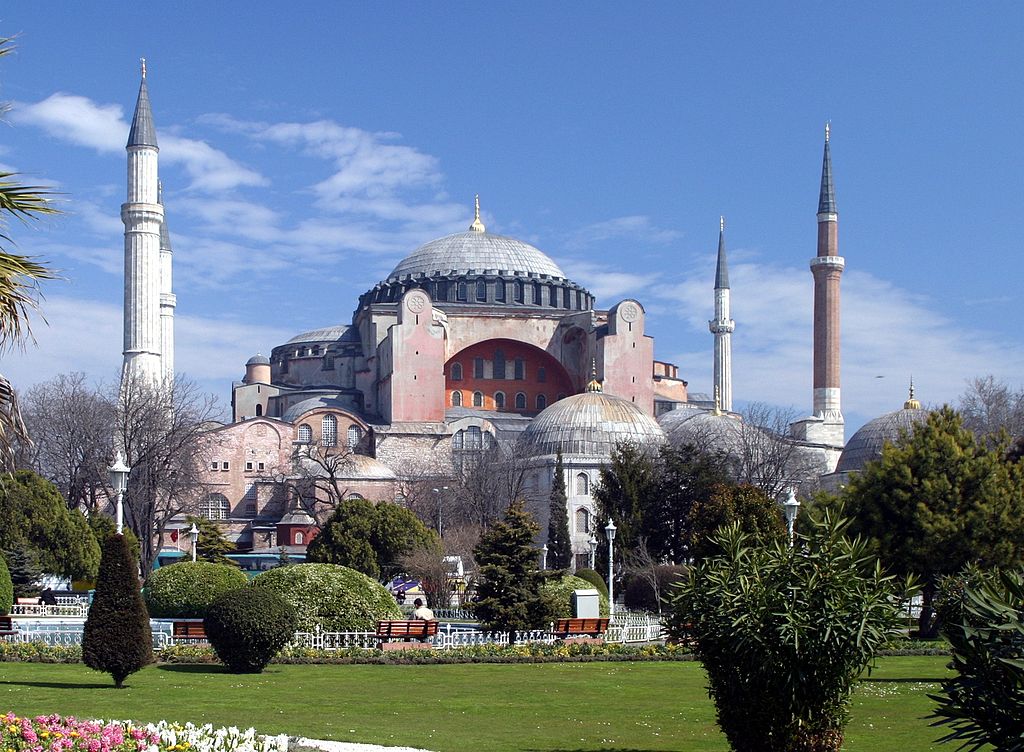
Were the Dark Ages really that dark? Many things changed in Europe after the Fall of (Western) Rome in 476 AD (CE). Governments broke down. People moved to the countryside. Cities fell into ruin. Engineering and architectural skills were forgotten. Raiding and warfare were common. But the early Middle Ages prepared the way for the emergence of new social and political structures in the Late Middle Ages and Renaissance era. And, in the eastern city of Constantinople, the Roman Empire survived for another 1000 years.
Upon completion of this module, you will be able to:- Identify and explain the significance of key figures, events, and ideas associated with early medieval Europe and the Byzantine Empire (SLO #1)
- Identify overarching themes and trends as they relate to politics, economics, religion, culture, and society in early medieval Europe and the Byzantine Empire (SLO #2).
- Compare and contrast Western Europe and the Byzantine Empire (SLO #3).
- Appropriately utilize historical websites, blogs, and videos (SLO #5).
- Locate and identify relevant geographical locations associated with early medieval Europe and the Byzantine Empire (SLO #6).
To achieve these objectives:
- Read the Module 7 Introduction
- Read and view the materials in Chapter 7 of the Pressbooks textbook.
- Complete the Module 7 discussion assignment.
- Complete the Module 7 exam.
Module Pressbooks Resources and Activities
You will find the following resources and activities in this module at the Pressbooks website. Click on the links below to access or complete each item.
-
Many things changed in Europe after the Fall of (Western) Rome in 476 AD (CE). Governments broke down. People moved to the countryside. Cities fell into ruin. Engineering and architectural skills were forgotten. Raiding and warfare were common. But the early Middle Ages prepared the way for the emergence of new social and political structures in the Late Middle Ages and Renaissance era. And, in the eastern city of Constantinople, the Roman Empire survived for another 1000 years.
This podcast episode has been produced under a CC BY NC ND license. All episodes in this series are made possible through funding from Louisiana Board of Regents eLearning Taskforce Innovation Grants Program for the project: Learn with podcasts! Creating Podcast Lectures to Enhance Dual Enrollment Students’ Engagement with History and the efforts of Lise Namikas, Christopher Gilson, Chresancio Jackson, Ryan Pierce, and Amelia Brister.
Podcast transcript
-
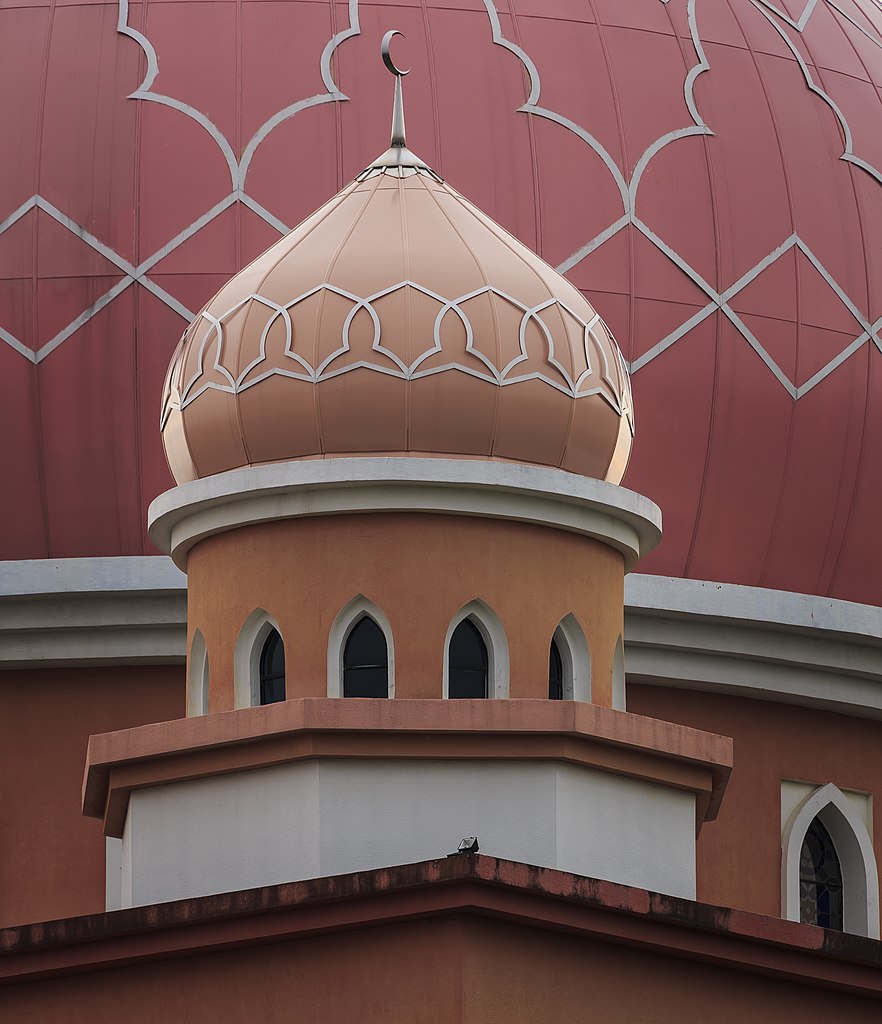
The Islamic world began in Arabia and grew with the vision of the prophet Muhammad. The chapter outlines Muhammad's experiences and the origins of Islam. It identifies the basic characteristics of Islam, its five pillars, community, and social aspects. The chapter then explains the growth and expansion of Islam, its empire building and conquest. It explains the empire building of Muhammad, and then those who followed, specifically the Umayyads and the Abbasids.
This chapter is relevant to our contemporary world today because a better understanding of Islam and its guiding principals can significantly improve the understanding of connections among people, while explaining natural differences, and putting into perspective the extremist (fundamental) views that exist and perpetuate terrorist attacks. The hope is that familiarity will help build better relationships.
Upon completion of this module, you will be able to:- Identify and explain the significance of key figures, events, and ideas associated with Muhammad and the origins of Islam. (SLO #1)
- Identify overarching themes and trends as they relate to politics, economics, religion, culture, and society in Arabia and Islam. (SLO #2)
- Locate and identify Mecca and other important places in Islam (such as Medina, Damascus, and Baghdad). (SLO #6)
To achieve these objectives:
- Read the Module 8 Introduction
- Read and view the materials in Chapter 8 of the Pressbooks textbook.
- Complete the Module 8 discussion assignment.
- Complete the Module 8 exam.
Module Pressbooks Resources and Activities
You will find the following resources and activities in this module at the Pressbooks website. Click on the links below to access or complete each item.
-
The Islamic world began in Arabia and grew with the vision of the prophet Muhammad. The chapter outlines Muhammad's experiences and the origins of Islam. It identifies the basic characteristics of Islam, its five pillars, community, and social aspects. The chapter then explains the growth and expansion of Islam, its empire building and conquest. It explains the empire building of Muhammad, and then those who followed, specifically the Umayyads and the Abbasids. Salwa and Saif Saeed, Louisiana Delta Community College students join Lise Namikas in this episode. Lise interviews Linda Midgett, independent director and producer of 2018 film: Same God.
This podcast episode has been produced under a CC BY NC ND license. All episodes in this series are made possible through funding from Louisiana Board of Regents eLearning Taskforce Innovation Grants Program for the project: Learn with podcasts! Creating Podcast Lectures to Enhance Dual Enrollment Students’ Engagement with History and the efforts of Lise Namikas, Christopher Gilson, Chresancio Jackson, Ryan Pierce, and Amelia Brister.
Episode Transcript
-
African civilizations are more diverse than anywhere else in the world. Yet the general, western understanding of Africa is slim. Africa has faced a number of environmental challenges that have limited population growth, but it has still fostered great empires such as those in Ethiopia (Aksum), the western Sudanic empires, and south Africa.This chapter is relevant to our contemporary world today because it is important to understand the majestic history of Africa's past, with its empires, religions, diversity, and challenges, as a way to better understand the variety of its pathways for the future.
Upon completion of this module, you will be able to:
- Identify and explain the significance of key figures, events, and ideas related to the history of ancient Africa. (SLO #1)
- Identify overarching themes and trends as they relate to politics, economics, religion, culture, and society in ancient Africa. (SLO #2)
- Locate and identify major empires such as Aksum, those in west Africa (the Sudanic empires) and Zimbabwe. (SLO #6)
To achieve these objectives:
- Read the Module 9 Introduction
- Read and view the materials in Chapter 9 of the Pressbooks textbook.
- Complete the Module 9 discussion assignment.
- Complete the Module 9 exam.
Module Pressbooks Resources and Activities
You will find the following resources and activities in this module at the Pressbooks website. Click on the links below to access or complete each item.
-
African civilizations are more diverse than anywhere else in the world. Yet the general, western understanding of Africa is slim. Africa has faced a number of environmental challenges that have limited population growth, but it has still fostered great empires such as those in Ethiopia (Aksum), the western Sudanic empires, and south Africa. In this episode, Lise Namikas interviews Prince Lobo, owner/manager of Addis Nola restaurant in New Orleans, Louisiana.
This podcast episode has been produced under a CC BY NC ND license. All episodes in this series are made possible through funding from Louisiana Board of Regents eLearning Taskforce Innovation Grants Program for the project: Learn with podcasts! Creating Podcast Lectures to Enhance Dual Enrollment Students’ Engagement with History and the efforts of Lise Namikas, Christopher Gilson, Chresancio Jackson, Ryan Pierce, and Amelia Brister.
Episode transcript
-
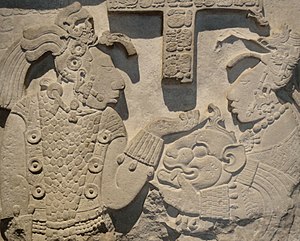 Welcome to Module 10! This module will explore the history of the Americas through the examination of the various groups of people who settled the continent. This module begins with an introduction into the migration of people across the Bering Strait to North America. The learner will examine the three major civilizations of the Americas,the Maya, Aztecs and the Inca.Upon completion of this module, you will be able to:
Welcome to Module 10! This module will explore the history of the Americas through the examination of the various groups of people who settled the continent. This module begins with an introduction into the migration of people across the Bering Strait to North America. The learner will examine the three major civilizations of the Americas,the Maya, Aztecs and the Inca.Upon completion of this module, you will be able to:- Identify and explain the significance of key figures, events, and ideas associated with early history of the Americas (SLO #1).
- Identify overarching themes and trends as they relate to politics, economics, religion, culture, and society in the early Americas (SLO #2).
- Locate and identify relevant geographical locations associated with the Americas (SLO #6).
To achieve these objectives:
- Read the Module 10 Introduction
- Read and view the materials in Chapter 10 of the Pressbooks textbook.
- Complete the Module 10 discussion assignment.
- Complete the Module 10 exam.
Module Pressbooks Resources and Activities
You will find the following resources and activities in this module at the Pressbooks website. Click on the links below to access or complete each item.
-
This module will explore the history of the Americas through the examination of the various groups of people who settled the continent. This module begins with an introduction into the migration of people across the Bering Strait to North America. The learner will examine the three major civilizations of the Americas,the Maya, Aztecs and the Inca.
This podcast episode has been produced under a CC BY NC ND license. All episodes in this series are made possible through funding from Louisiana Board of Regents eLearning Taskforce Innovation Grants Program for the project: Learn with podcasts! Creating Podcast Lectures to Enhance Dual Enrollment Students’ Engagement with History and the efforts of Lise Namikas, Christopher Gilson, Chresancio Jackson, Ryan Pierce, and Amelia Brister.
Episode Transcript
-
This module will explore the history of the Americas through the examination of the various groups of people who settled the continent. This module begins with an introduction into the migration of people across the Bering Strait to North America. The learner will examine the three major civilizations of the Americas,the Maya, Aztecs and the Inca.
This podcast episode has been produced under a CC BY NC ND license. All episodes in this series are made possible through funding from Louisiana Board of Regents eLearning Taskforce Innovation Grants Program for the project: Learn with podcasts! Creating Podcast Lectures to Enhance Dual Enrollment Students’ Engagement with History and the efforts of Lise Namikas, Christopher Gilson, Chresancio Jackson, Ryan Pierce, and Amelia Brister.
Episode Transcript
-
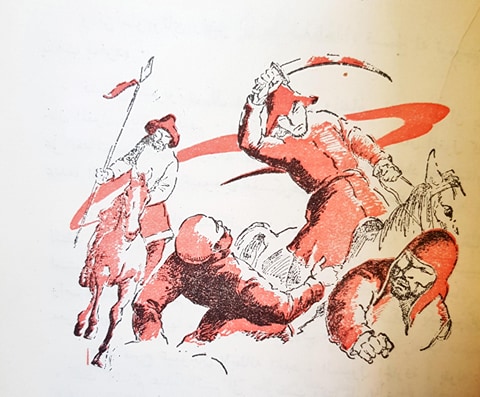 The Mongols were a unique force in world history, as nomadic pastoralists, they still created major and impactful empires. Beginning with Genghis Khan the Mongols moved west into South Asia, the middle east, and the lands of Rus, as well as founding a the Yuan empire in China. They blended with the Turkic peoples, lead with a brutal form of conquest, and gradually will adopt Islam and settle more permanently.This chapter is relevant to our contemporary world today because it resulted in a link between Europe and Asia and resulted in a connection between the regions, and vision of universalism, that continues to be important.
The Mongols were a unique force in world history, as nomadic pastoralists, they still created major and impactful empires. Beginning with Genghis Khan the Mongols moved west into South Asia, the middle east, and the lands of Rus, as well as founding a the Yuan empire in China. They blended with the Turkic peoples, lead with a brutal form of conquest, and gradually will adopt Islam and settle more permanently.This chapter is relevant to our contemporary world today because it resulted in a link between Europe and Asia and resulted in a connection between the regions, and vision of universalism, that continues to be important.Upon completion of this module, you will be able to:
- Identify and explain the significance of key figures, events, and ideas related to the history of the Mongols. (SLO #1)
- Identify overarching themes and trends as they relate to politics, economics, religion, culture of the Mongols. (SLO #2)
- Locate and identify major empires of the Mongols including the Yuan, Chagatai, Ilkhanate and Golden Horde. (SLO #6)
To achieve these objectives:
- Read the Module 11 Introduction
- Read and view the materials in Chapter 11 of the Pressbooks textbook.
- Complete the Module 11 discussion assignment.
- Complete the Module 11 exam.
-
The Mongols were a unique force in world history, as nomadic pastoralists, they still created major and impactful empires. Beginning with Genghis Khan the Mongols moved west into South Asia, the middle east, and the lands of Rus, as well as founding the Yuan empire in China. They blended with the Turkic peoples, lead with a brutal form of conquest, and gradually will adopt Islam and settle more permanently.
This podcast episode has been produced under a CC BY NC ND license. All episodes in this series are made possible through funding from Louisiana Board of Regents eLearning Taskforce Innovation Grants Program for the project: Learn with podcasts! Creating Podcast Lectures to Enhance Dual Enrollment Students’ Engagement with History and the efforts of Lise Namikas, Christopher Gilson, Chresancio Jackson, Ryan Pierce, and Amelia Brister.
Episode Transcript
-
The Renaissance draws together many of the topics discussed in this class. The period was defined by new interest in the culture of ancient Greece and Rome, as can be seen in the art of Leonardo da Vinci and Michelangelo. The Renaissance also encouraged scientific inquiry and exploration, often using ancient works preserved by medieval Christian and Islamic scribes. In the end, Renaissance sailors and navigators reconnected Europe to Africa and Asia, and ultimately to the Americas. When Columbus crossed the Atlantic in 1492, his voyage did more than connect two hemispheres: it symbolized the end of one era and the beginning of another.
Upon completion of this module, you will be able to:- Identify and explain the significance of key figures, events, and ideas associated with late medieval Europe and the Renaissance (SLO #1).
- Identify overarching themes and trends in the late Middle Ages as they relate to politics, economics, religion, culture, and society (SLO #2).
- Compare and contrast Western Europe and the Byzantine Empire (SLO #3).
- Analyze primary sources to understand and explain perspective, audience, context, and purpose (SLO #4).
- Appropriately utilize historical websites, blogs, and videos (SLO #5).
- Locate and identify relevant geographical locations associated with early medieval Europe and the Byzantine Empire (SLO #6).
To achieve these objectives:- Read the Module 12 Introduction
- Read and view the materials in Chapter 12 of the Pressbooks textbook.
- Complete the Module 12 discussion assignment.
- Complete the Module 12 exam.
Module Pressbooks Resources and Activities
You will find the following resources and activities in this module at the Pressbooks website. Click on the links below to access or complete each item.
-
The Renaissance draws together many of the topics discussed in this class. The period was defined by new interest in the culture of ancient Greece and Rome, as can be seen in the art of Leonardo da Vinci and Michelangelo. The Renaissance also encouraged scientific inquiry and exploration, often using ancient works preserved by medieval Christian and Islamic scribes. In the end, Renaissance sailors and navigators reconnected Europe to Africa and Asia, and ultimately to the Americas. When Columbus crossed the Atlantic in 1492, his voyage did more than connect two hemispheres: it symbolized the end of one era and the beginning of another.
This podcast episode has been produced under a CC BY NC ND license. All episodes in this series are made possible through funding from Louisiana Board of Regents eLearning Taskforce Innovation Grants Program for the project: Learn with podcasts! Creating Podcast Lectures to Enhance Dual Enrollment Students’ Engagement with History and the efforts of Lise Namikas, Christopher Gilson, Chresancio Jackson, Ryan Pierce, and Amelia Brister.
Podcast transcript
-
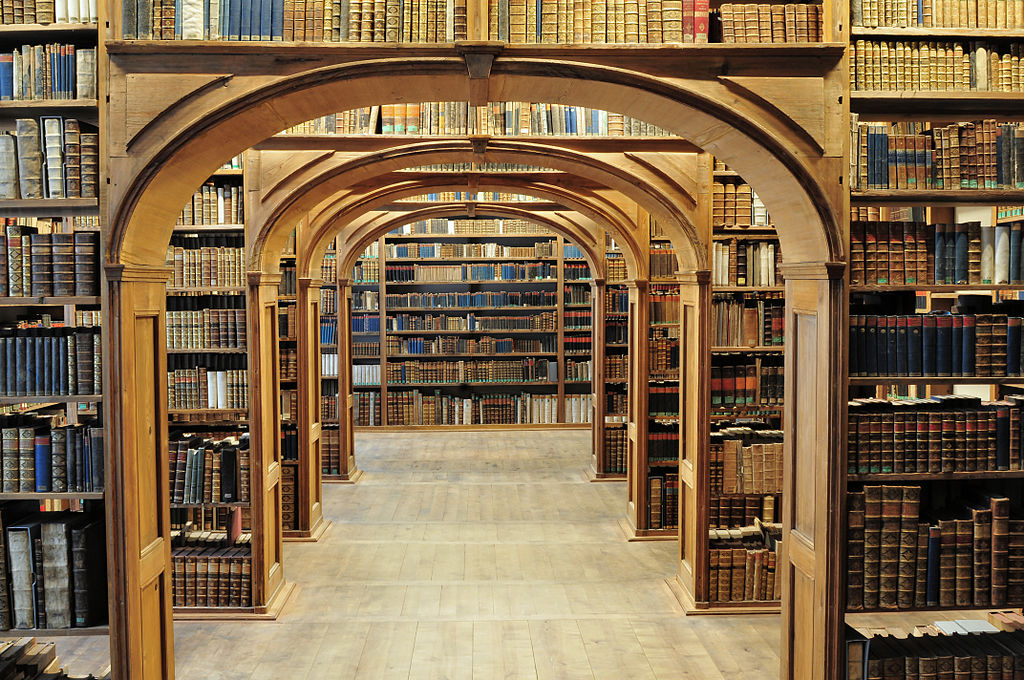
In this module you will take your Final Exam. The final exam is a multiple-choice test that draws on questions completed for the Pressbooks chapters and Quizzes for Modules 7-12. Please complete the exam in the allotted time and by the assigned date.Upon completion of this module, you will have:
- Read and viewed the instructions above.
- Scheduled your exam with the proctoring service if needed.
- Prepared for and submitted your midterm exam.
To achieve these objectives:
- Click on Final Exam and follow the instructions.
- Log in to the proctoring service (if needed) and take your exam.
